The symptoms of neck pain are common to everyone: it pulls the muscles, it is impossible to tilt and turn the head, and to look to the side, you have to turn your whole body. The cause of the problem, as a rule, is the spine: violations, hernias, scoliosis lead to the fact that a person experiences pain in the back and neck. The discomfort allowed him to heal himself. But if the pain radiating to the neck does not go away after therapy at home, the next step is to see a doctor.
Neck pain in adults
Neck pain in women
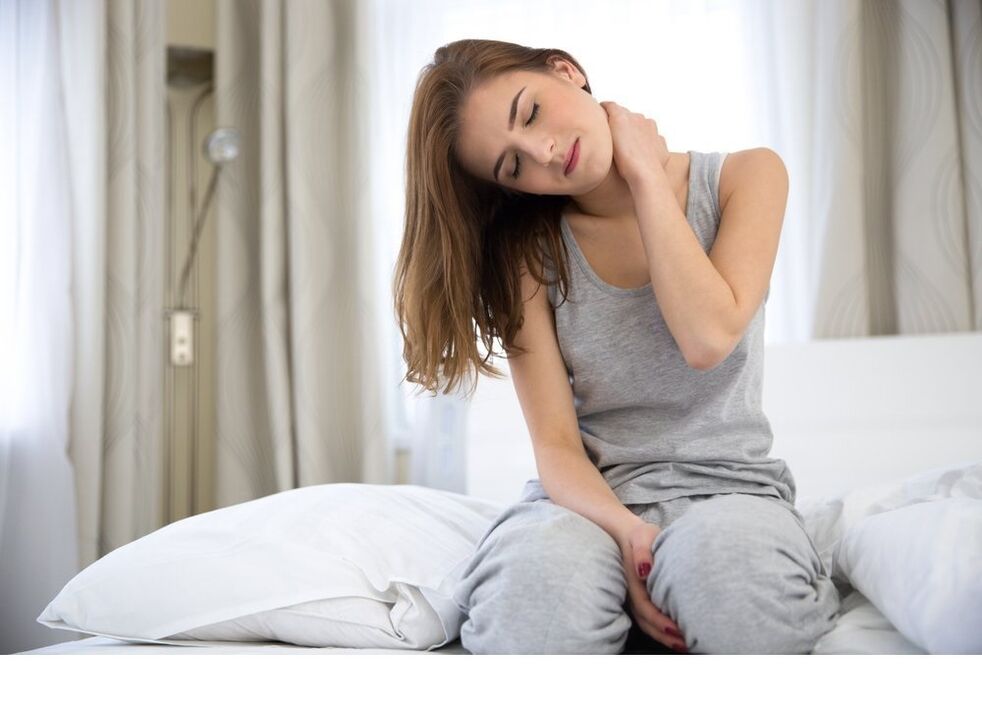
Neck pain during pregnancy
Back and neck pain often worries pregnant mothers. The explanation is simple - with changes in weight and body parts, posture changes, the load on the spine increases.
How to deal with this disorder? A special maternity bandage will help keep your buttocks in the correct position. To strengthen the muscles of the back and neck, it is useful to swim and yoga (of course, with the permission of gynecologists). You need to sleep comfortably, on a hard mattress and low pillows. But the most important thing is to see a doctor, because any self -treatment can have a negative impact on the condition of the mother and the unborn baby.
Neck pain in young mothers
Back and neck pain are common among young mothers. The problem is complicated by the fact that a woman while breastfeeding can not use a lot of drugs, because harmful substances will get into the milk. How to help yourself and prevent pain in the neck from interfering with the baby’s joy?
- Monitor your body posture. While carrying a child, the center of gravity shifts with the increase of the abdomen - you have to bend over to maintain balance, and the shoulders tense at all times.
- Don’t overdo it physically, try to spread the load on the back properly. Various carrier tools can help with this. They distribute the child’s weight on both shoulders and prevent back and neck fatigue.
- Baby care items need to be adjusted according to their height so as not to stand for long in an uncomfortable position.
- It is very important to be comfortable while breastfeeding, especially at night.
Neck pain in men
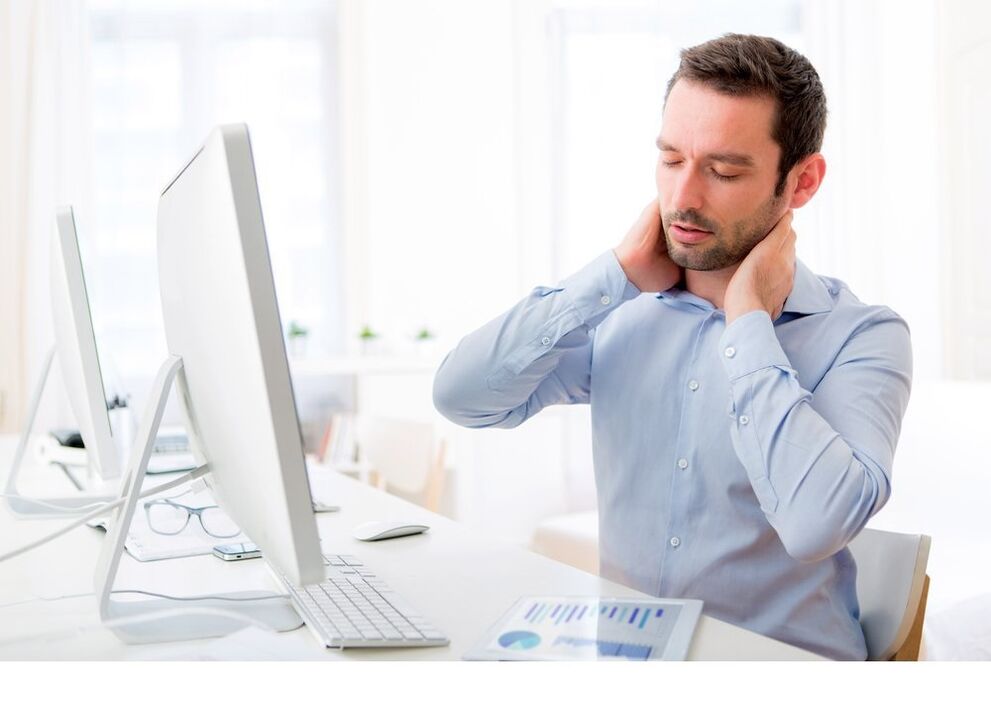
Neck pain, as a rule, does not differ by gender - it can appear in men and women. Yet there are some differences in anatomy: the male’s neck is decorated with a noticeable Adam’s apple - a thickening of the thyroid cartilage, its plates located at an angle to each other.
Pain in Adam's apple in men may indicate a rather serious illness:
- Thyroiditis is an inflammation of the thyroid gland. With thyroiditis, patients worry about pain in the neck when turning, pain in Adam’s apple, above and below it, swelling in the neck.
- Thyroid cartilage cancer - the danger lies in the fact that the onset of the disease is similar to the common cold: sore throat when swallowing, difficulty in turning the neck and even breathing.
- Thyroid cartilage phlegmon is a life -threatening, life -threatening spread of cartilage and soft tissue of the neck. Patients complain of chills and high fever, pain when swallowing, loss of voice, difficulty breathing.
- Cartilage tuberculosis occurs, as a rule, with existing pulmonary tuberculosis and is a complication.
- Kadik may be ill due to osteochondrosis. Violations cause pain during swallowing, sneezing, coughing.
- Fractures, bruises, and cartilage compression can cause displacement, swelling of the neck, and shortness of breath.
Neck pain in the elderly
Pain that radiates to the neck, in the elderly, can indicate the development of the disease:
- Peak lung cancer (cancer with Pancost and Horner syndrome). The patient’s pain in this case was associated with tumor growth to the nerve endings in the shoulder girdle and neck.
- Tumors in the neck, salivary glands.
- Coronary heart disease. The pain can spread from the chest to the neck and arms, causing symptoms similar to osteochondrosis.
- Polymyalgia rheumatica is an inflammatory disorder characterized by stiffness and pain in the muscles in the shoulder girdle and hip.
- Spinal metastases in various oncological diseases (it is no secret that the chances of getting cancer increase with age).
- Subluxation of the cervical vertebrae as a complication of rheumatoid arthritis.
- The most common causes of neck and neck pain in the elderly are osteoarthritis and osteochondrosis of the spine, rheumatoid arthritis and chronic inflammation of the connective tissue.
Neck pain in children

Severe neck pain in children occurs for the same reasons as in adults:
- Trauma
- Osteochondrosis
- Stress and anxiety
- Growth
- Diseases of other organs cause distant pain
Perhaps the most "childish" cause of neck pain is torticollis, when a child’s head is turned sharply to the side. Torticollis is dangerous because it leads to curvature of the cervical spine and interferes with the formation of the facial skeleton.
Contrary to popular belief, the disease occurs not only during childbirth. Depending on how torticollis appears, the following types are distinguished:
- Congenital - it can occur in the uterus if the fetus is not positioned correctly, but most often it occurs during childbirth, when the baby turns his head to the side and injures the neck muscles.
- Dermatogenous - when the neck is twisted from scars left by trauma or burns.
- Reflex - it occurs with injuries, otitis media, diseases of the salivary glands.
- Neurogenic - due to muscle spasm after polio or encephalitis.
- Spasticity - due to excessive tension of the cervical muscles.
- Traumatic - associated with vertebral fractures.
Torticollis (except dermatogenic and neurogenic) is usually observed in newborns, or manifests itself in the first months. The greatest risk of occurrence arises when:
- The fetus during childbirth naturally is being done.
- The location of the fetus in the mother's abdomen is such that the uterine wall presses against the neck.
- Giving birth is difficult, and the baby's mastoid muscles are damaged (with the formation of scars).
- Became a necessity to use forceps and a vacuum for hard work.
- The mastoid muscle becomes inflamed during intrauterine development, as a result of which muscle tissue is replaced by fibrous tissue in the area of inflammation.
- Pathological and shortened mastoid muscle hypertrophy.
- By caesarean section.
How can you cure torticollis?
- Conservative methods are with the help of massage and physiotherapy, special orthopedic styles of baby’s head, wearing an orthopedic collar, and gymnastic exercises.
- Operation - performed if conservative methods do not yield results. During the operation, the surgeon lengthens the sternocleidomastoid muscle and straightens the position of the child’s head.
Different types of neck pain
Sharp neck pain
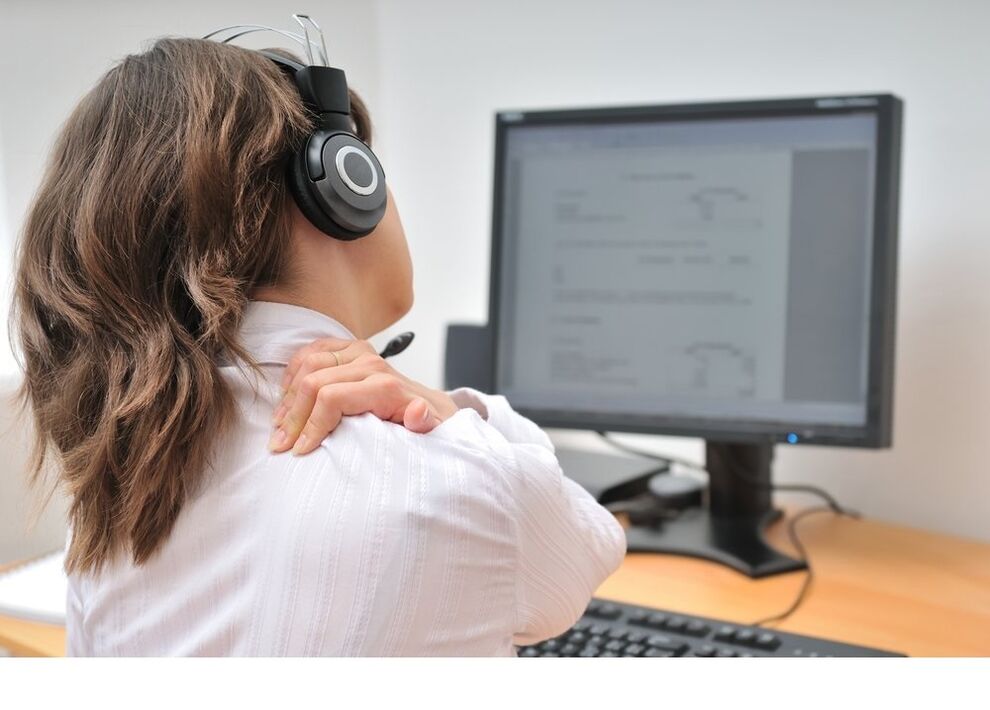
Why is there a sharp pain in the neck? There are two reasons:
- Trauma (fractures, blows, cramps).
- Violation of nerve endings - this occurs with osteochondrosis, herniated intervertebral discs, compression of the spinal canal.
Treatment for pain depends on the cause and includes:
- Prescribe pain medication.
- Muscle relaxation and antispasmodics to relieve muscle spasms.
- Immobilization (immobilization) of the cervical spine.
- Exercise therapy and physiotherapy.
Severe neck pain
Severe neck pain is always unpleasant. I want to find out quickly why it hurts and recover. What causes severe pain?
- Exacerbation of osteochondrosis, when unsuccessful movement, rotation or concussion of the body causes displacement of the vertebrae, violation of the existing hernia, compression of the spinal nerves.
- Cervical radiculitis (inflammation and pinching of the roots of the spine).
- Cervicago - "lumbago" (severe sharp muscle spasm).
- Severe back and neck pain can occur after an injury.
Neck pain with osteochondrosis
Neck pain with osteochondrosis is very severe and gives the patient a few unpleasant minutes. As a result of muscle spasm or shifting of the vertebrae against each other, the arteries that supply the brain can be pinched or twisted. In the worst cases, this can lead to a condition similar to pre-stroke, when a person is dizzy, everything drifts in front of the eyes, sometimes speech and vision are lost.
Neck pain on left side
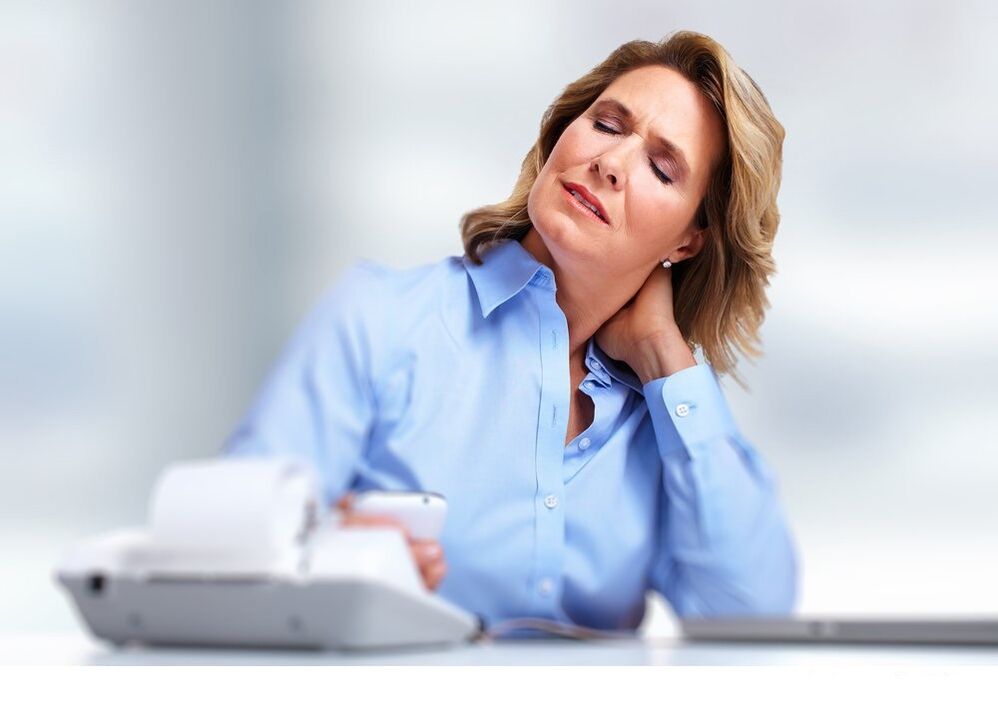
Neck pain on the left side is a possible symptom of a problem not only on the cervical spine, but also on the outside. What can a person have if he has neck pain on the left side?
- Heart disease (heart attack, coronary artery disease, angina pectoris).
- Upper left lung cancer.
- Injuries.
- Tumor metastasis from other organs to the left node of the neck.
- Infectious inflammation of the lymph nodes (caused by tonsillitis, ARVI, tonsillitis).
Neck pain on the right side
Pain in the neck on the right side is a worrying symptom, but is most often vaguely explained: a person suffers from osteochondrosis with all its consequences. Such consequences include nerve traps, muscle spasms, intervertebral protrusions and hernias, vascular disorders.
But there are other causes of neck pain on the right side:
- Biliary colic radiates to the neck and shoulders.
- Right apical lung cancer with tumor invasion to the nerve located above.
- Bruises, injuries, fractures of the clavicle and vertebrae.
- Tumor of the cervical spine (metastasis from other organs).
- If the pain is concentrated in the right front of the neck, this could also indicate a heart problem (heart attack, coronary artery disease).
- Inflammation of the lymph nodes due to ARVI and sore throat.
Neck and shoulder pain

Pain in the neck and shoulders is a classic sign of cervical osteochondrosis and its accompanying complications (violation of hernias, nerves, spinal cord trunks). In addition, simultaneous pain in the neck and shoulders are symptoms of such diseases:
- Gallstone disease during exacerbation, with biliary colic.
- Heart disease.
- Arthrosis of the shoulder.
- Cervical plexitis is an inflammation of the large spinal cord nerves.
- Periarthritis of the shoulder and scapula - inflammation of the shoulder tendons and capsules of the shoulder joint.
- Myositis.
- Arthritis.
Neck and back pain
Pain in the neck and lower back, as a rule, is a sign of widespread osteochondrosis, which has invaded the entire spinal space. However, it does not happen that the posture on one side of the spine is good, and on the other side is bad. With osteochondrosis, the neck pain feels mild when the disease is in a state of subsidence, and strong, painful if it has worsened. The exacerbation begins with sharp pain in the neck and back with unsuccessful turns, movements, blows. It can be removed with the help of medications prescribed by a doctor, rest, scorching heat in the affected area, exercise therapy and physiotherapy.
Neck and neck pain
Pain in the neck and back of the head is often a symptom of superficial cervical osteochondrosis - a dangerous, but not fatal, disease. But sometimes shows meningitis, and the disease poses a threat to human life. The causative agents of meningitis - bacteria and viruses - invade the brain and spinal cord, and cause inflammation of their membranes.
Numbness, pain in the neck and back of the head, occipital muscle spasm, inability to pull the head to the chest simultaneously, bending of the legs at the knees - all these are meningeal symptoms that will immediately alert the doctor. Treatment of dangerous diseases is done in hospitals,
In addition to meningitis and osteochondrosis, the causes of pain in the neck and back of the head can be injury, occipital nerve neuralgia, hypertension and muscle tension.
Causes and symptoms of neck pain
Trauma

The cause of pain in the neck is sometimes an injury, because the cervical vertebrae are moved or broken, the spinal nerves are damaged. Injuries can occur as a result of an accident, fall, injury, bad diving, or sudden movement. Symptoms of a neck injury include:
- Improper neck indentation, inability to rotate the head, chest and neck muscle tension indicate fractures in the lower vertebrae.
- Pain in the crown and back of the head is an indication that the first cervical vertebra is damaged.
- Swelling and "bruising" can be the result of a neck injury.
- Pain in the neck when turning the head, shoulders, upper chest, headaches are symptoms of whiplash injuries, which occur due to sharp bending and alternating neck circumference (this can happen when the vehicle is suddenly damaged).
Neoplasm
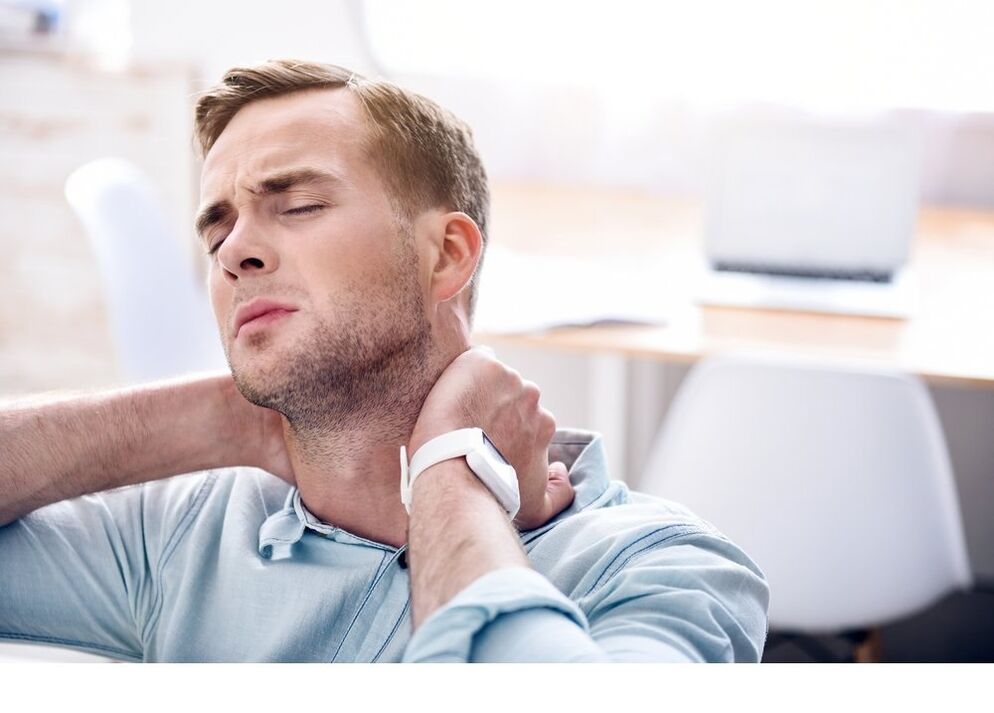
A very dangerous cause of neck pain is a malignant neoplasm. How can it happen?
- Neck pain as a symptom of a tumor in the upper part of the lung. It grows in groups of nerves and blood vessels, causing severe pain. A person may be bothered with neck pain on the left or on the right, depending on the location of the tumor.
- Symptoms of neck pain sometimes indicate the development of lymphoma - cancer of the lymph nodes. Since many lymph nodes are concentrated in the neck, they grow with the progression of the disease, and it is difficult not to notice it. Other prominent signs of lymphoma are excessive sweating, a fever that seems ridiculous, and weight loss.
- Salivary gland cancer is a tumor that affects the salivary glands behind the ears, on the sides of the neck, and in the palate. In the early stages, it is not painful, only occasionally can you see seals in the affected glands.
- A laryngeal tumor grows into its wall, visually representing a tuberous neoplasm. It is difficult to observe it during routine examinations, therefore, unfortunately, cancer is diagnosed in the final stages, when other manifestations become apparent: the feeling of a foreign body in the throat, hoarse voice and difficult nose, difficulty breathing through the nose. Laryngeal tumors are also dangerous because they are prone to the early appearance of metastases, which greatly worsens the patient’s prognosis of recovery.
- Thyroid cancer appears with nodular lumps, pain in the front of the neck, and voice changes.
- In cartilage cancer of the thyroid gland, patients complain of difficulty swallowing and transferring food in the larynx, sensation of foreign objects or a lump in the throat.
Pain reflected in diseases of other organs
The pain radiating to the neck does not always indicate that the problem is in the neck itself. Sometimes the pain is due to the health of other unhealthy organs, and then the pain is said to be reflected. What diseases can cause it?
- Heart (ischemic heart disease, heart attack, angina pectoris) - they are accompanied by attacks, when the pain radiates to the shoulders, neck, sometimes to the arms.
- Pain in the neck on the right side, under the right scapula and in the right shoulder occurs during an attack of biliary colic with stones in the gallbladder.
- Diseases of the esophagus (reflux, erosions, ulcers).
- Oncological diseases (lymphomas, tumor metastases) are the cause of human suffering when neoplasms affect nerve endings. So, cancer at the apex of the lung, when the tumor grows upwards, causes pain in the neck and shoulders. Intracranial tumors, oncological diseases of the head also cause pain in the cervical spine.
- Abscesses and phlegm of the head.
- Bleeding into the subarachnoid space between the brain and fine tissue.
Psychological causes of neck pain
Symptoms of neck pain often appear along with muscle spasms. Cramps are not just caused by stress, injury or injury - the causes can be stress, nervous shock and fatigue. Why is this happening?
The fact is that the body perceives stress as a threat to its well -being, and this makes it move. There is a release of stress hormones into the bloodstream, the heart rate increases, and digestion, in turn, slows down. Muscle tone increases in response to hormonal changes. Once an anxious condition is experienced, the body will be in a normal state. But if emotional stress takes a chronic form, muscle spasms become persistent, and against its background, diseases of the spine develop (osteochondrosis, hernia, disc protrusion).
Inactive lifestyle, frequent computer work
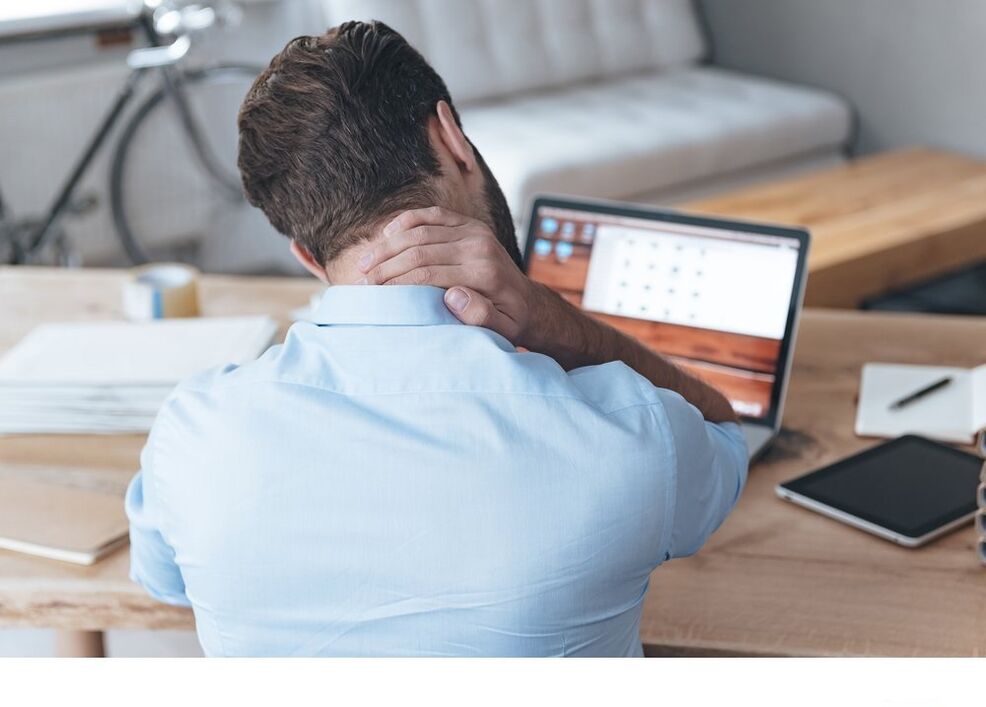
Pain in the neck muscles often occurs due to the fact that a person has poor posture, and the cause of postural disorders may be weakness of the muscular corset. As a rule, this happens to people who are far from physical education, lead an inactive lifestyle and work a lot at computers. The situation is exacerbated by the fact that the workplace is often not arranged properly, and the person is sitting bent over or uncomfortable. As a result, pain radiating to the neck becomes a constant companion, the usual muscle spasms form, degenerative changes in the intervertebral disc begin, osteochondrosis develops. And even with osteochondrosis, neck pain becomes a constant companion: periods of lost pain are replaced by exacerbations, and only competent treatment, lifestyle changes from inactive to moving, posture control, strengthening neck and back muscles can break this cycle.
Diagnosis for neck pain
How to determine the cause of neck pain and determine the diagnosis?
- First of all, you need to gather anamnesis:
- Anamnesis of life. It is necessary to know whether there have been injuries to the neck and shoulders in the past, what diseases the person suffered from, and which of them became chronic, whether there have been recent fever and hypothermia. For example, the fact of cholecystitis can explain the painful sensation in the neck - with biliary colic, the pain sometimes radiates only to this area. At the same time, the causes of neck pain on the left side are: tumor in the upper part of the left lung, muscle inflammation and compression of the spinal root on the left side.
- Anamnesis of the disease - how and how it started, which doctor the patient referred to, what examinations and treatments were prescribed for him, how it affected the course of the disease (whether it got better or worse).
- Visual examination will help make a diagnosis - the doctor performs palpation of the lymph nodes and muscles, examines the movement of the head and neck, assesses the condition and color of the skin, looks for visible damage and trauma.
- If there is a suspicion that neck and shoulder pain is the result of disease of other organs, the patient should be referred to a specialized specialist - oncologist, endocrinologist, gastroenterologist, cardiologist, etc.
- In other cases, radiation diagnostics will help clarify the diagnosis: MSCT, CT, X-ray.
- Sometimes electroneuromyography (ENMG), an electrophysiological study, is a useful diagnostic procedure, which determines the condition of muscles and the peripheral nervous system.
Treatment of neck pain
Drug treatment

Medical treatment of neck pain, if caused by cancer or a problem in another organ, aims to address the underlying disease. If the problem is a disease of the spine and muscles, then the following medications can be prescribed:
- Nonsteroidal anti-inflammatory drugs (NSAIDs) are used to relieve pain and reduce inflammation. NSAIDs are available in the form of tablets, injections, and in the form of gels and ointments. In the acute stage, both can be prescribed (at intervals of several hours). So, if you can turn your head from pain in the neck just with tears, injections and ointments will help.
- Muscle relaxants are medications that reduce skeletal muscle tone.
- Antispasmodics - drugs to relieve smooth muscle spasms.
- Vitamin B is needed to enhance metabolic processes and the synthesis of neurotransmitters.
- If blood circulation is disturbed due to compression of blood vessels and muscles, vasodilating drugs are prescribed.
Sort
Massage to treat pain in the neck and lower back is used when the acute symptoms of the disease have subsided. The beneficial effects of massage are:
- Increases blood flow in the affected area
- Relieves muscle cramps, soothes, helps reduce tension and fatigue
- Eliminates swelling and inflammation
- Increases cerebral blood supply
- Restores the joint's ability to move
Physiotherapy
Physiotherapy treatment of neck pain begins at the same time as medication, when the acute symptoms disappear or disappear. During the course of the disease, only manipulations that have an analgesic effect can be prescribed. Physiotherapy gives a good effect, because its effect is aimed specifically at the diseased area. What procedures are possible?
- Electrophoresis with various drugs. Under the influence of alternating currents, drugs penetrate deep into the tissue.
- Phototherapy (laser therapy) - exposure to light rays with a fixed wavelength in the affected area of the body.
- Magnetotherapy is a method of treating pain under the neck and in the neck using alternating or continuous magnetic fields. This method has anti-inflammatory and analgesic effects.
- Ultrasound treatment provides relief from neck pain and inflammation.
- Detensor therapy is a stretching of the spine due to the weight of a person on a special mattress with sloping ribs. This type of physiotherapy normalizes muscle tone, relieving tension.
- The method of shock wave therapy (SWT) is based on the action of low frequency acoustic waves that are inaudible to the human ear. Treatment with the help of shock wave therapy allows you to reduce or eliminate pain, improving blood flow in the area of exposure to the device.
- Vibration therapy - exposure to mechanical vibrations using a vibrating massager.
- Exercise therapy (physiotherapy training) - the complex can vary from traditional gymnastics to a set of individual exercises, which are developed taking into account the diagnosis and condition of the patient.
Surgical intervention
Surgical treatment for neck pain is prescribed when conservative therapy does not give the desired results:
- The pain does not go away with medication
- There are signs of spinal cord and root compression
- Pronounced and increased weakness in the muscles of the hands
Often, surgery to remove a disc herniation is performed concurrently with fusion and immobilization of adjacent vertebrae. To remove spinal cord compression, laminectomy is used - removal of part of the vertebral arch, followed by removal of osteophytes and hernias.
After proper surgery and recovery, the symptoms of neck pain stop bothering the patient.
Prevent neck pain

With neck pain, turning the head, tilting it, or lying down comfortably becomes a big problem. And if it's very painful, life is not fun at all. You can avoid neck problems with prevention. What must we do?
- Choose a comfortable sleeping position, a mattress with enough firmness and a low pillow where your shoulders will not fall.
- Monitor your own body posture: do not bend, do not sit bent.
- Do at least moderate exercise to strengthen your neck muscles regularly. Stretching and yoga are very helpful.
- If you lead an inactive lifestyle, take a break every hour and a half to walk, stretch, and stretch.
- Protect from physical injury: do not twist your neck sharply, avoid the impact and load of traumatic sports.
- Get rid of the habit of talking on the phone by pressing it with your ears and shoulders.
- Avoid nervous shock, stress and anxiety. Negative emotions and anxiety can cause cramps, fatigue, and muscle cramps.
- It is undesirable to load one of the two shoulders, as distortion of the spine causes neck pain on the right or left side.
- Avoid colds and pus that can cause myositis (inflammation of the neck muscles).
- Drink plenty of decaffeinated fluids. Adequate water allows you to transport the substances and electrolytes needed by the muscles efficiently.
- Eat foods that contain calcium, magnesium, sodium, and potassium. Deficiency of this substance can cause muscle cramps and neck pain.
Severe neck pain can seriously ruin your life, especially if it happens at the wrong time - for example, during a long vacation. Therefore, on the first "call", one can not ignore the alarming body signals, but undergo an examination and get a doctor's recommendation. No need to remember for prevention: moderate exercise, sleep and work in a comfortable state, proper nutrition and weight distribution while carrying will help maintain neck health.













































